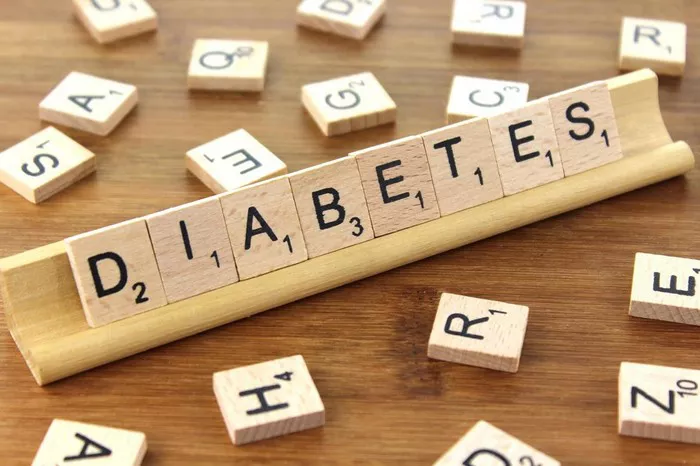Type 2 diabetes is a chronic condition that affects millions of people worldwide, characterized by the body’s inability to effectively use insulin, leading to elevated blood glucose levels. Diagnosing type 2 diabetes early is crucial for managing the disease, preventing complications, and maintaining overall health. Blood tests play a central role in diagnosing and monitoring type 2 diabetes, helping healthcare professionals assess blood glucose levels, insulin resistance, and long-term glucose control.
This article will explore the various blood tests used for diagnosing and managing type 2 diabetes, explaining their importance, how they are conducted, and what the results signify.
The Importance of Blood Tests for Type 2 Diabetes
Blood tests are the gold standard for diagnosing diabetes. They offer a reliable measure of how well the body is regulating glucose, which is essential for determining whether a person has diabetes, prediabetes, or normal blood glucose levels. Blood tests are also used to monitor diabetes once it is diagnosed, allowing for ongoing management and adjustments to treatment plans.
The Most Common Blood Tests for Type 2 Diabetes
Several blood tests can be used to diagnose type 2 diabetes, and each serves a specific purpose. The three primary tests are:
- Fasting Plasma Glucose (FPG) Test
- Oral Glucose Tolerance Test (OGTT)
- Hemoglobin A1c (HbA1c) Test
Other tests, such as random plasma glucose tests and C-peptide tests, may also be used in specific circumstances. We’ll explore each of these tests in detail below.
Fasting Plasma Glucose (FPG) Test
What is the FPG Test?
The Fasting Plasma Glucose (FPG) test measures the level of glucose in the blood after an individual has fasted for at least eight hours. It is one of the most common tests used to diagnose type 2 diabetes and assess a person’s risk of developing the condition.
How is the FPG Test Conducted?
To conduct the FPG test, the individual is asked to fast overnight (usually for 8 to 12 hours). The next morning, a blood sample is drawn, and the plasma glucose level is measured. Because the test is performed after fasting, it provides an accurate reflection of how well the body regulates glucose without the influence of recent food intake.
What Do the Results Mean?
The results of the FPG test are measured in milligrams per deciliter (mg/dL) or millimoles per liter (mmol/L), and the interpretation is as follows:
Normal: FPG less than 100 mg/dL (5.6 mmol/L)
Prediabetes (Impaired Fasting Glucose): FPG between 100 mg/dL and 125 mg/dL (5.6 to 6.9 mmol/L)
Diabetes: FPG 126 mg/dL (7.0 mmol/L) or higher on two separate occasions
A diagnosis of diabetes is made if the fasting glucose level is consistently above 126 mg/dL. If the level is between 100 and 125 mg/dL, the individual is considered to have prediabetes, indicating a higher risk of developing diabetes in the future.
Oral Glucose Tolerance Test (OGTT)
What is the OGTT?
The Oral Glucose Tolerance Test (OGTT) assesses how the body processes glucose over time by measuring blood sugar levels before and after drinking a glucose-rich solution. It is particularly useful for diagnosing type 2 diabetes and prediabetes, and it can also be used to diagnose gestational diabetes.
How is the OGTT Conducted?
The OGTT requires fasting for at least eight hours before the test. After a fasting blood sample is taken, the individual is asked to drink a solution containing 75 grams of glucose. Blood samples are then drawn at regular intervals, usually at one and two hours after consuming the solution, to measure how the body handles the glucose load.
What Do the Results Mean?
The key values used to interpret the OGTT results are the fasting glucose level and the two-hour glucose level, measured in mg/dL or mmol/L. The interpretation is as follows:
Normal: Two-hour glucose less than 140 mg/dL (7.8 mmol/L)
Prediabetes (Impaired Glucose Tolerance): Two-hour glucose between 140 mg/dL and 199 mg/dL (7.8 to 11.0 mmol/L)
Diabetes: Two-hour glucose 200 mg/dL (11.1 mmol/L) or higher
If the two-hour glucose level is 200 mg/dL or higher, a diagnosis of diabetes is confirmed. If the level is between 140 and 199 mg/dL, the individual has prediabetes and is at risk of developing diabetes in the future.
The OGTT is particularly useful for identifying cases of diabetes that may not be detected by fasting glucose levels alone, as it measures how the body responds to a glucose challenge.
Hemoglobin A1c (HbA1c) Test
What is the HbA1c Test?
The Hemoglobin A1c (HbA1c) test measures the percentage of glycated hemoglobin, which reflects the average blood glucose levels over the past two to three months. Hemoglobin is a protein in red blood cells that carries oxygen, and when glucose attaches to it, the hemoglobin becomes glycated. The HbA1c test is a key tool for both diagnosing diabetes and monitoring long-term blood sugar control in individuals with the condition.
How is the HbA1c Test Conducted?
The HbA1c test requires a blood sample, which can be taken at any time of day, regardless of fasting status. It measures the percentage of hemoglobin that is glycated, providing an estimate of the individual’s average blood glucose level over the preceding two to three months.
What Do the Results Mean?
The results of the HbA1c test are expressed as a percentage, and the interpretation is as follows:
Normal: HbA1c below 5.7%
Prediabetes: HbA1c between 5.7% and 6.4%
Diabetes: HbA1c 6.5% or higher
An HbA1c level of 6.5% or higher on two separate occasions confirms a diagnosis of diabetes. Levels between 5.7% and 6.4% indicate prediabetes, suggesting an elevated risk of developing diabetes in the future.
One of the advantages of the HbA1c test is that it provides a long-term measure of blood sugar control, unlike the FPG and OGTT, which reflect glucose levels at specific points in time. This makes the HbA1c test an essential tool for monitoring diabetes management over the long term.
Random Plasma Glucose Test
What is the Random Plasma Glucose Test?
The Random Plasma Glucose (RPG) test measures blood sugar levels at any time of day, without regard to when the individual last ate. It is often used in cases where symptoms of diabetes are present, such as frequent urination, excessive thirst, unexplained weight loss, or fatigue, and immediate testing is needed.
How is the RPG Test Conducted?
The RPG test involves drawing a blood sample at any time, regardless of fasting or recent food intake. It provides a quick assessment of the current blood glucose level.
What Do the Results Mean?
The interpretation of the RPG test is as follows:
Normal: RPG less than 140 mg/dL (7.8 mmol/L)
Prediabetes: RPG between 140 mg/dL and 199 mg/dL (7.8 to 11.0 mmol/L)
Diabetes: RPG 200 mg/dL (11.1 mmol/L) or higher, with symptoms of diabetes
If the RPG level is 200 mg/dL or higher and the individual is experiencing symptoms of diabetes, a diagnosis of diabetes is likely. However, the RPG test is not typically used as a sole diagnostic tool, and further testing (such as FPG or HbA1c) is usually recommended to confirm the diagnosis.
C-Peptide Test
What is the C-Peptide Test?
The C-peptide test measures the level of C-peptide in the blood, which is a byproduct of insulin production. Since C-peptide is released in equal amounts to insulin, it provides an indirect measure of how much insulin the body is producing. The test is useful for distinguishing between type 1 and type 2 diabetes and for assessing insulin production in individuals with diabetes.
How is the C-Peptide Test Conducted?
The C-peptide test requires a blood sample, which can be taken at any time, though fasting is sometimes recommended for more accurate results. The level of C-peptide in the blood is then measured to assess insulin production.
What Do the Results Mean?
The interpretation of the C-peptide test depends on whether the individual is producing insulin and at what level:
Low C-Peptide: Indicates low insulin production, which is characteristic of type 1 diabetes or advanced type 2 diabetes with beta-cell failure.
Normal or High C-Peptide: Indicates normal or excessive insulin production, which is characteristic of type 2 diabetes, particularly in the early stages.
The C-peptide test can be particularly useful for determining the appropriate treatment approach for individuals with diabetes, such as whether they need insulin therapy or if oral medications may be sufficient.
Diagnosing Type 2 Diabetes: A Comprehensive Approach
Diagnosing type 2 diabetes often requires more than one blood test to get a comprehensive understanding of a person’s glucose metabolism. While the FPG, OGTT, and HbA1c tests are the most commonly used, the choice of test(s) depends on the individual’s symptoms, risk factors, and overall health. In some cases, additional tests like the C-peptide test may be warranted to differentiate between different types of diabetes or to guide treatment decisions.
Monitoring Diabetes: The Role of Blood Tests in Long-Term Care
For individuals diagnosed with type 2 diabetes, regular blood tests are essential for monitoring the condition and adjusting treatment as needed. The HbA1c test is particularly valuable for assessing long-term blood sugar control and evaluating the effectiveness of diabetes management strategies.
In addition to regular HbA1c testing, individuals with diabetes may need periodic FPG or RPG tests to monitor day-to-day glucose levels, especially if they are using insulin or other medications that affect blood sugar.
See also: What Supplements to Take for Diabetes
Conclusion
Blood tests are the cornerstone of diagnosing and managing type 2 diabetes. The FPG, OGTT, HbA1c, and RPG tests each provide valuable information about an individual’s blood glucose levels, allowing healthcare providers to diagnose diabetes, assess risk, and guide treatment. For those already diagnosed with diabetes, regular blood tests help ensure that the condition is being effectively managed, reducing the risk of complications and improving quality of life.
If you suspect you may have type 2 diabetes or if you are at risk due to family history, obesity, or other factors, it is crucial to undergo the appropriate blood tests. Early diagnosis and proper management can make a significant difference in your health and long-term outcomes. Consult your healthcare provider to determine which tests are right for you and how often they should be conducted to keep your blood sugar levels in check.
Related topics:
4 Most Common Leading Complications of Diabetes

























